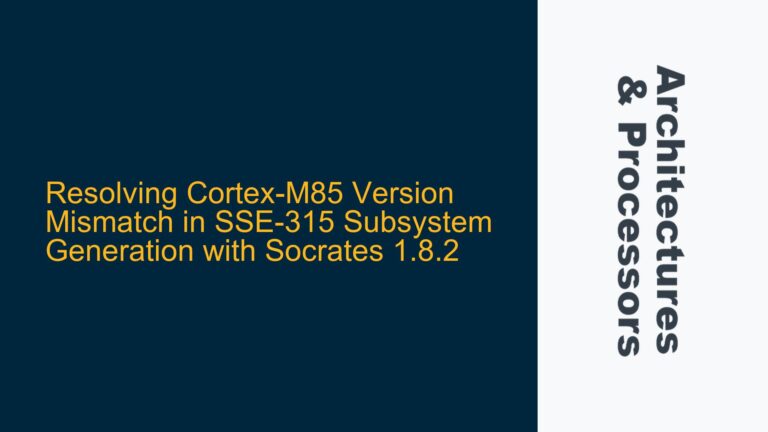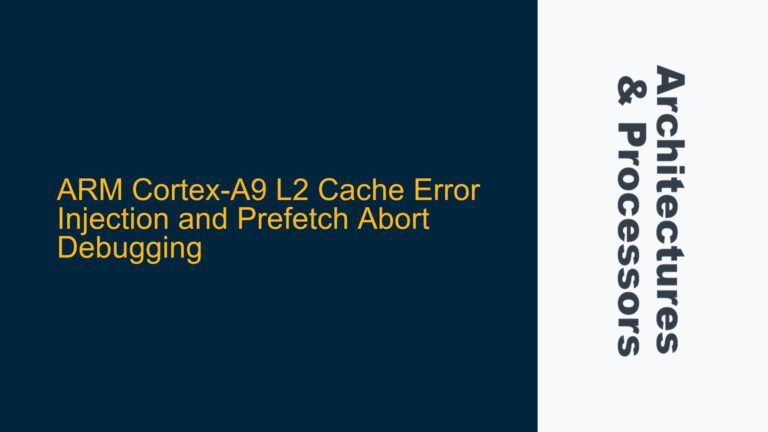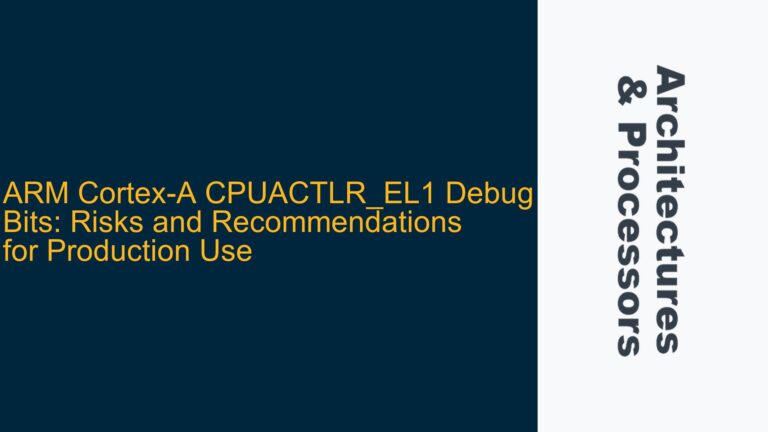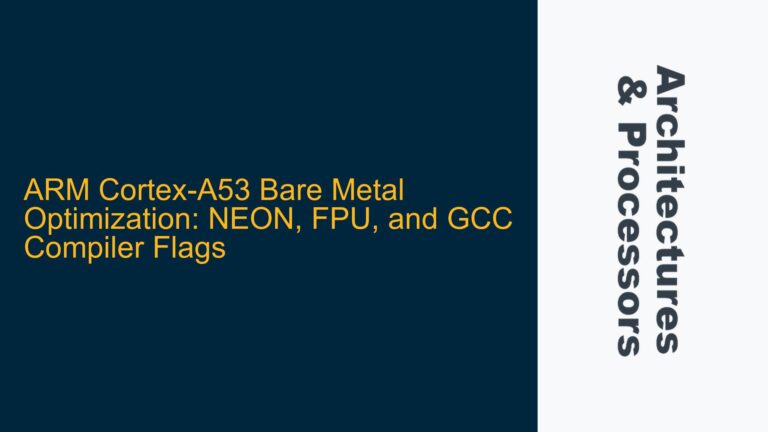ARM CHI Protocol and the Absence of Explicit Last Transaction Signals
The ARM Coherent Hub Interface (CHI) protocol is a high-performance, scalable, and coherent interconnect protocol designed for modern ARM-based systems. Unlike the AXI protocol, which uses explicit signals like RLAST and WLAST to denote the last transaction in a burst, CHI employs a different approach to manage transaction boundaries. This difference often causes confusion for engineers transitioning from AXI to CHI, as they expect a direct equivalent to RLAST/WLAST in CHI.
In CHI, transactions are packet-based, and the protocol relies on packet framing and transaction IDs to manage data flow. Each packet contains metadata that defines the transaction’s characteristics, including its length and type. The absence of a dedicated "last transaction" signal is intentional, as CHI’s design emphasizes efficiency and scalability, particularly in multi-core and cache-coherent systems. Instead of using explicit signals, CHI leverages the transaction ID (TxnID) and packet boundaries to determine the end of a transaction.
The CHI protocol divides transactions into request and response phases, with each phase consisting of one or more packets. The request phase initiates the transaction, while the response phase completes it. The protocol ensures that all packets belonging to a single transaction are grouped together using the TxnID. This grouping allows the receiving component to identify the start and end of a transaction without requiring an explicit "last transaction" signal.
However, this design choice introduces complexity when debugging or verifying CHI-based systems. Engineers must carefully analyze the packet structure and TxnID assignments to ensure that transactions are correctly identified and processed. Misinterpretation of packet boundaries or incorrect TxnID management can lead to data corruption, dropped transactions, or system hangs.
Misalignment Between AXI and CHI Transaction Management Paradigms
The confusion surrounding the absence of RLAST/WLAST equivalents in CHI stems from a fundamental misalignment between the transaction management paradigms of AXI and CHI. AXI is a point-to-point protocol that relies on explicit handshaking signals to manage data transfers. In contrast, CHI is a packet-based protocol designed for coherent interconnects, where transactions are managed at a higher level of abstraction.
In AXI, the RLAST and WLAST signals are critical for indicating the end of a burst transfer. These signals are generated by the master and validated by the slave to ensure that the entire burst is processed correctly. This explicit signaling simplifies transaction management but can become a bottleneck in high-performance systems, where the overhead of managing individual signals can limit scalability.
CHI, on the other hand, adopts a more efficient approach by embedding transaction management information within the packet headers. Each packet contains fields such as the TxnID, packet type, and data length, which collectively define the transaction’s boundaries. This approach eliminates the need for explicit "last transaction" signals, reducing the protocol’s overhead and improving scalability.
However, this shift in paradigm requires engineers to adopt a different mindset when working with CHI. Instead of relying on explicit signals, they must analyze the packet structure and use the TxnID to track transactions. This can be challenging, particularly when debugging complex systems with multiple concurrent transactions.
Another source of confusion is the difference in how AXI and CHI handle burst transfers. In AXI, burst transfers are explicitly defined using signals like AxLEN and AxSIZE, which specify the number of transfers and the size of each transfer, respectively. In CHI, burst transfers are implicitly defined by the packet structure and data length fields. This implicit approach can make it difficult to determine the exact boundaries of a burst transfer, particularly when dealing with variable-length transactions.
Leveraging TxnID and Packet Boundaries for Transaction Management
To effectively manage transactions in CHI, engineers must understand how to leverage the TxnID and packet boundaries. The TxnID is a unique identifier assigned to each transaction, allowing the system to track and manage multiple concurrent transactions. Each packet within a transaction carries the same TxnID, enabling the receiving component to group packets and identify the transaction’s boundaries.
When analyzing a CHI-based system, engineers should start by examining the packet headers to extract the TxnID and other relevant fields. The packet type field indicates whether the packet is part of a request or response phase, while the data length field specifies the amount of data being transferred. By correlating these fields, engineers can reconstruct the transaction and identify its boundaries.
In addition to the TxnID, engineers should also pay attention to the packet boundaries. CHI packets are framed using specific start and end markers, which define the packet’s extent. These markers are critical for ensuring that packets are correctly parsed and processed. Misalignment of packet boundaries can lead to data corruption or incomplete transactions.
To facilitate transaction management, engineers can use tools such as protocol analyzers and simulation environments. These tools provide visibility into the packet structure and allow engineers to trace the flow of transactions through the system. By analyzing the packet traces, engineers can identify issues such as missing packets, incorrect TxnID assignments, or misaligned packet boundaries.
In some cases, engineers may need to implement custom logic to handle specific transaction management requirements. For example, if a system requires explicit "last transaction" signaling, engineers can design a state machine that monitors the TxnID and packet boundaries to generate a custom signal indicating the end of a transaction. This approach provides the benefits of CHI’s efficient packet-based design while addressing specific system requirements.
In conclusion, the absence of explicit "last transaction" signals in CHI is a deliberate design choice that reflects the protocol’s focus on efficiency and scalability. By understanding how to leverage the TxnID and packet boundaries, engineers can effectively manage transactions in CHI-based systems and avoid common pitfalls associated with the transition from AXI. While this approach requires a shift in mindset, it ultimately enables the development of high-performance, scalable systems that meet the demands of modern embedded applications.






